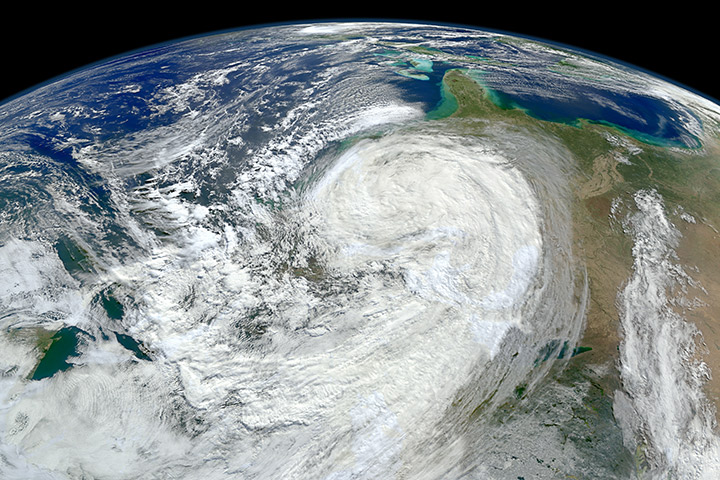The northeastern coast of the United States could be hit by more frequent and more powerful hurricanes in the future, according to research published in the journal Scientific Reports on November 23, 2016.
The study found that, due to shifting weather patterns, hurricanes have gradually moved northwards from the western Caribbean toward northern North America over the past few hundred years.
The reason for this change in the hurricane track, the researchers suggest, is the expansion of atmospheric circulation belts driven by increasing carbon dioxide emissions.
New York and other major cities along the northeast coast could come under a growing threat from these severe storms and need to be better prepared for their potential impact, the researchers said. Dr. Lisa Baldini of Durham University is the study’s lead author. She said in a statement:
Our research shows that the hurricane risk to the northeastern coast of the United States is increasing as hurricanes track further north.
Since the 19th century this shift was largely driven by man-made emissions and if these emissions continue as expected this will result in more frequent and powerful storms affecting the financial and population centers of the northeastern United States.

The researchers say that rising amounts of atmospheric CO2 have expanded a pattern of circulating air in the Earth’s tropical belt called the Hadley cell, which is pushing hurricane tracks further north, away from the western Caribbean towards the northeastern U.S. According to the researchers:
This suggests that from the late 19th century, manmade emissions have become the main driver behind shifting hurricane tracks by altering the position of global weather systems.
If future trends in carbon dioxide and industrial aerosol emissions continue as expected, hurricanes could shift even further northward, exacerbating the risk to the northeast coast of the United States.

For the study, the scientists reconstructed hurricane rainfall for the western Caribbean dating back 450 years. Do do this they analyxed the chemical composition of a stalagmite collected from a cave in southern Belize in Central America.
They found that the average number of hurricanes at the Belize site decreased over time. When the hurricane history of Belize was compared with documentary hurricane records from places such as Bermuda and Florida, this information showed that Atlantic hurricanes were moving to the north rather than decreasing in total numbers.
Although natural warming over the centuries has had some impact on shifting hurricane tracks, the researchers found a marked decrease in hurricane activity in the western Caribbean coinciding with the late 19th century industrial boom associated with increasing carbon dioxide and sulphate aerosol emissions to the atmosphere.
The researchers said that initial regional cooling of the Northern Hemisphere due to the increased aerosol emissions from industrialization should have pushed the hurricane tracks southward. But instead, rising amounts of atmospheric carbon dioxide overrode this effect by expanding the Hadley cell – a pattern of circulating air in the Earth’s tropical belt – pushing hurricane tracks further north, away from the western Caribbean towards the northeastern United States.
Enjoying EarthSky? Sign up for our free daily newsletter today!
Bottom line: Research published in Scientific Reports on November 23, 2016 suggests that the northeastern coast of the United States could be hit by more frequent and more powerful hurricanes in the future.











